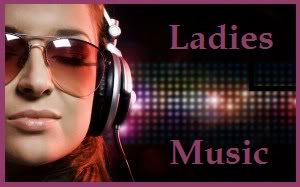It’s the night before the “American Idol” finale. You’re one of the two remaining contestants — the lesser one — and all but certain to receive a thrashing in front of nearly 30 million people.....
The story of Bice’s bender is one of a few small gems of backstage drama in Rushfield’s “American Idol: The Untold Story.” No pop-culture phenomenon is more ripe for exposé than “American Idol,” the most popular television series of the last decade and the reality show that remains, even in the face of increasing tabloid interest, relatively wholesome.
As a reporter on the “Idol” beat for The Los Angeles Times and now The Daily Beast, Rushfield has been dogged and thorough, breaking several stories along the way. But there’s little new in this book, which is neither the definitive story of the “Idol” empire nor a satisfying tell-all teeming with behind-the-scenes gossip. Instead, it’s an amiable and in places astute recap of the last nine years, when an unloved British import became an American fixation, rewriting the rules of the television business along the way.
That’s true of both “American Idol” itself and Simon Cowell, the caustic yet lovable judge who left the show to bring his rival singing competition, “The X Factor,” to the United States later this year. One of Rushfield’s sharpest insights here is on the subject of Cowell, whose acid tongue he characterizes as “a trait that a succession of outraged schoolmasters saw as the nerve of an overprivileged brat, but that would eventually resolve itself into the ‘fearless truth telling’ that would reshape entertainment.” Those tough-to-watch but irresistible dressing-downs? Just small blasts of class warfare, maybe.
Rushfield himself apes this power dynamic, though, by heavily employing interviews with top “Idol” management to frame his story, then filling it in with flashes of intrigue from low-level contestants. It’s a bit like writing about the Super Bowl by interviewing the team owners and the chain gang. For this book, he does not appear to have spoken (on the record, at least) with any “Idol” winners, the judges Randy Jackson and Paula Abdul, or the host, Ryan Seacrest. He does capture some revealing moments, though. The first-season winner, Kelly Clarkson, may be dismayed to find herself described, by the executive producer Nigel Lythgoe, as “one of those girls, not particularly pretty, not a particularly gorgeous body or anything. Just talented.” Um, thanks?
Large sections of the book consist of rote, familiar chronology, with occasional attempts at contextualizing, including some strained efforts to link the success of “Idol” to the post-9/11 mood in America. And Rushfield is given to feverish turns of phrase: “Hollywood Week” — when a few hundred contestants are whittled down to the semifinalists — “tapped into the most potent myth in American culture, even more potent than the legend that any boy can grow up to be president.”
Still, Rushfield has been around the “Idol” machine long enough to know that some of its most interesting characters are on the outside looking in. He excels when he breaks away from the rehashing and profiles people with deep and underexplored “Idol” connections. There’s the Season 1 co-host Brian Dunkleman, still darkened by the shadow of his departure from the show almost a decade later; Dave Della Terza, who operates the “Idol”-inspired subversion site votefortheworst.com; and, most fascinating, Leesa Bellesi, a little-known unofficial spiritual adviser to several “Idol” figures in recent seasons. Rushfield notes that Bellesi’s influence seems to have risen as more and more “Idol” finalists were drawn from the world of Christian worship music, but he doesn’t pursue this topic — one of several threads left unattended here.









